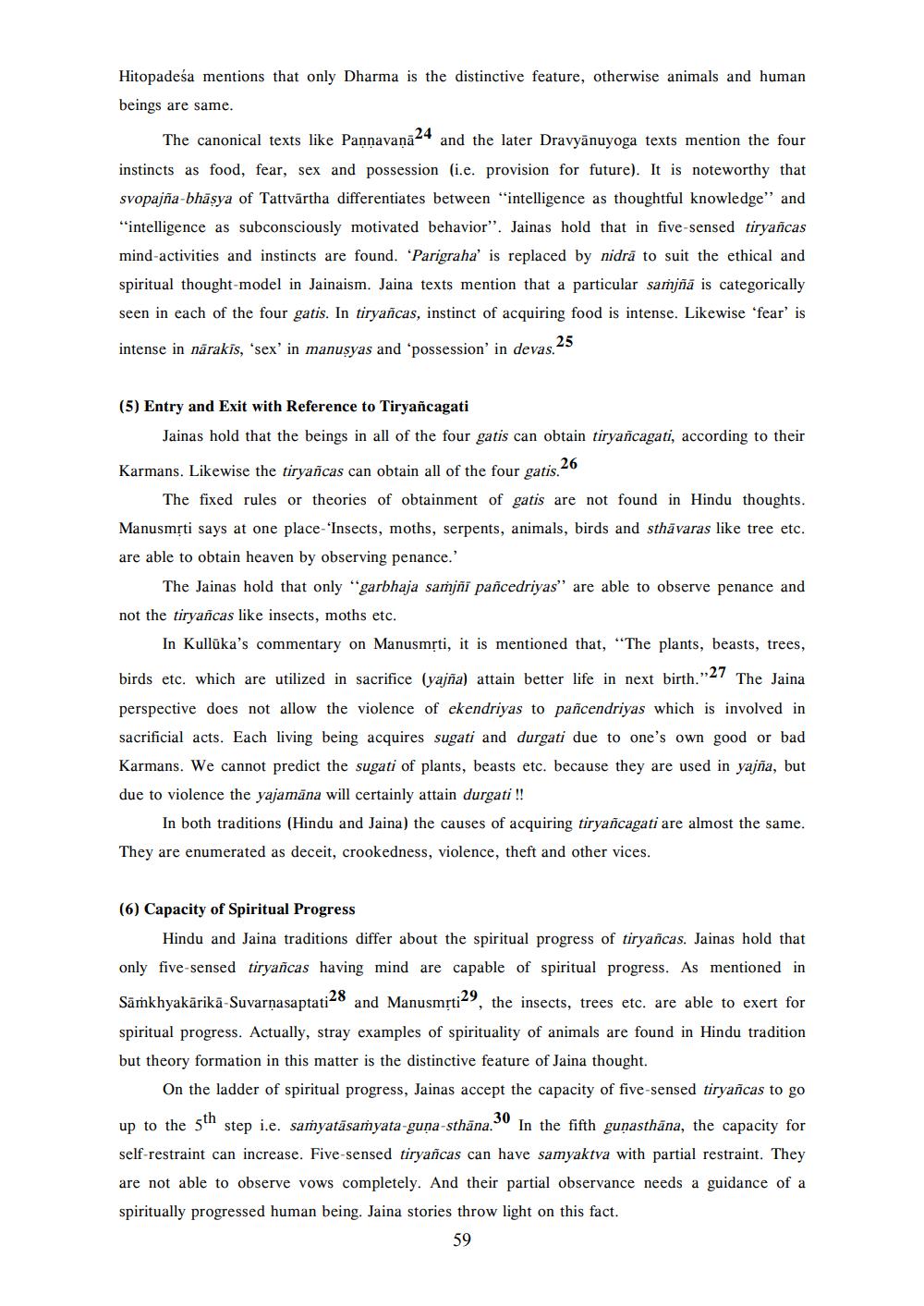________________
Hitopadeśa mentions that only Dharma is the distinctive feature, otherwise animals and human beings are same.
The canonical texts like Pannavaņā44 and the later Dravyānuyoga texts mention the four instincts as food, fear, sex and possession (i.e. provision for future). It is noteworthy that svopajña-bhāsya of Tattvārtha differentiates between "intelligence as thoughtful knowledge" and "intelligence as subconsciously motivated behavior". Jainas hold that in five-sensed tiryañcas mind activities and instincts are found. 'Parigraha' is replaced by nidrā to suit the ethical and spiritual thought-model in Jainaism. Jaina texts mention that a particular samjñā is categorically seen in each of the four gatis. In tiryancas, instinct of acquiring food is intense. Likewise 'fear' is
intense in nārakis, 'sex' in manusyas and possession' in devas.“
(5) Entry and Exit with Reference to Tiryancagati
Jainas hold that the beings in all of the four gatis can obtain tiryancagati, according to their
Karmans. Likewise the tiryañcas can obtain all of the four gatis.20
The fixed rules or theories of obtainment of gatis are not found in Hindu thoughts. Manusmrti says at one place -'Insects, moths, serpents, animals, birds and sthāvaras like tree etc. are able to obtain heaven by observing penance.'
The Jainas hold that only "garbhaja samjñi pañcedriyas" are able to observe penance and not the tiryancas like insects, moths etc.
In Kullūka's commentary on Manusmrti, it is mentioned that, “The plants, beasts, trees,
birds etc. which are utilized in sacrifice (yajña) attain better life in next birth."27 The Jaina perspective does not allow the violence of ekendriyas to pañcendriyas which is involved in sacrificial acts. Each living being acquires sugati and durgati due to one's own good or bad Karmans. We cannot predict the sugati of plants, beasts etc. because they are used in yajña, but due to violence the yajamāna will certainly attain durgati!!
In both traditions (Hindu and Jaina) the causes of acquiring tiryancagati are almost the same. They are enumerated as deceit, crookedness, violence, theft and other vices.
(6) Capacity of Spiritual Progress
Hindu and Jaina traditions differ about the spiritual progress of tiryañcas. Jainas hold that only five-sensed tiryancas having mind are capable of spiritual progress. As mentioned in Sāmkhyakārikā-Suvarnasaptati28 and Manusmrti29, the insects, trees etc. are able to exert for spiritual progress. Actually, stray examples of spirituality of animals are found in Hindu tradition but theory formation in this matter is the distinctive feature of Jaina thought.
On the ladder of spiritual progress, Jainas accept the capacity of five-sensed tiryancas to go
up to the 5" step i.e. samyatāsamyata-guna-sthāna. In the fifth gunasthāna, the capacity for self-restraint can increase. Five-sensed tiryancas can have samyaktva with partial restraint. They are not able to observe vows completely. And their partial observance needs a guidance of a spiritually progressed human being. Jaina stories throw light on this fact.
59




